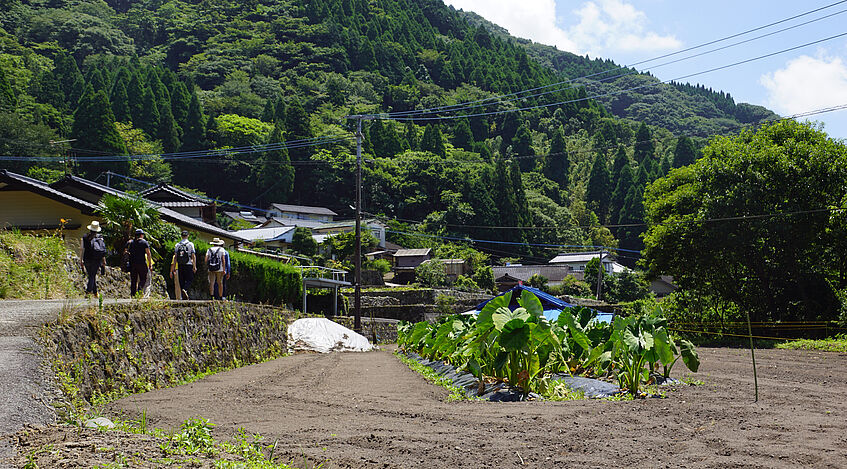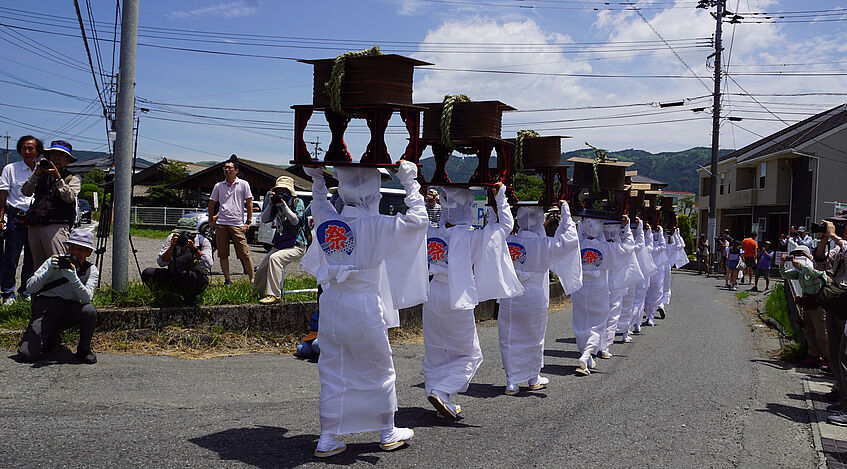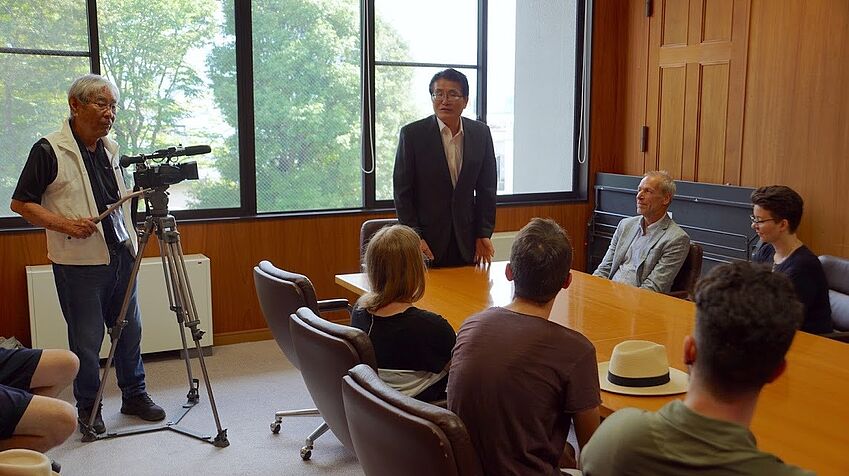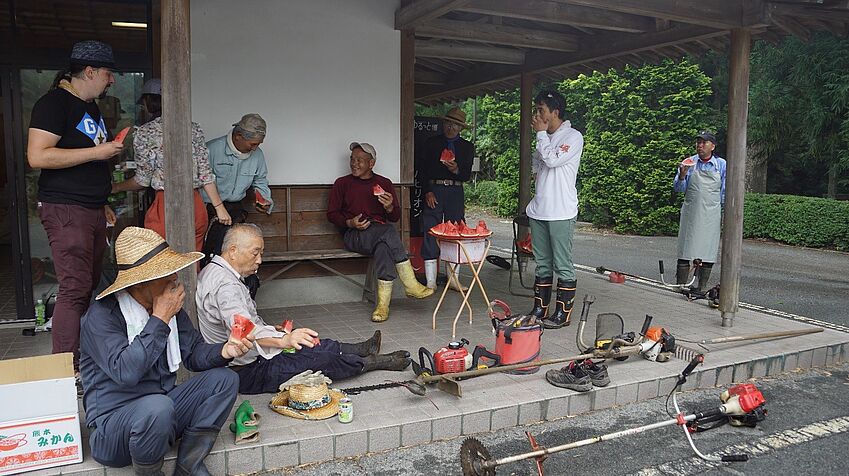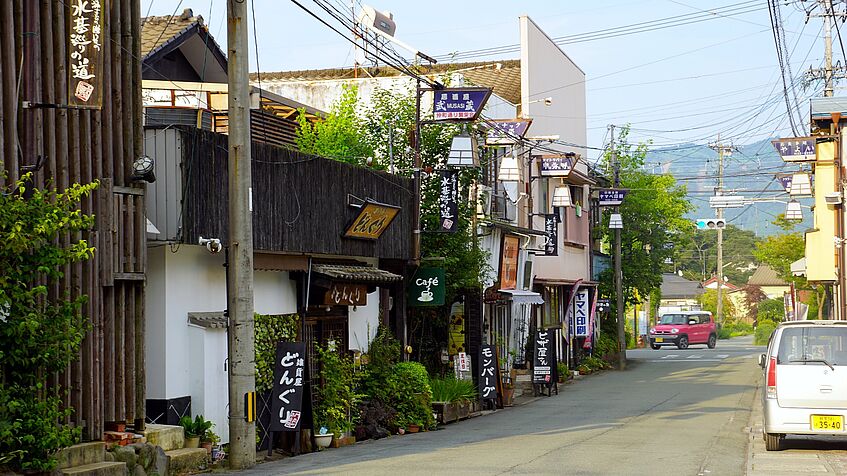Aso Summer Field School 2018: Students' Experience
Antonia Miserka, Fabian Schunk, Florian Ramberger, Johannes Wilhelm, Julia Ramprecht, Kerim Mallée, Luisa Jäger, Marion Dallapozza, Martin Bär, Matthias Pech, Stefan Aichholzer, Tamara Opacic, Wolfram Manzenreiter
University of Vienna, Dept. of East Asian Studies
Preparations and first contact
Before diving into fieldwork, preparation is key. Our introduction began with the classics: reading reports from early ethnological research in Aso, the region of our interest. Austrian research contributions began under Josef Kreiner in the late 1960s during the formative years of the Vienna School of Japanese Studies. We also started working with original data from surveys that were used during the first Aso Project. Our efforts culminated in the construction of a new questionnaire to be distributed in the village, exchange with anthropologists and a pre-test with Japanese support in Vienna. In Kumamoto we had the chance to present and discuss our research endeavor at Kumamoto University, where we also were lectured by our academic ancestor Kreiner-Sensei on previous research efforts in the Aso region.
Reaching the site of research
The support by the local people and institutions is crucial to conduct fieldwork successfully. For this reason, our first days in the field began with a formal visit to Aso City Hall to greet the vice-mayor – in front of the cameras of the local TV broadcaster. Thanks to Aso City, we were able to cycle across the sparsely populated area, where public transport is wanting, in the burning mid-summer heat. During the first week we practiced how to observe our surroundings, how to supplement the pre-knowledge with information gained from informal talks with locals, how to find gate-keepers. Daily briefings and group meetings helped to structure the training progress but were too few, as was the time we had for going through our field notes and writing the blog entries in the evening hours.
Connecting with the local community
The actual research started when we moved from the town center to the small hamlet after the first week. Most of our days we investigated the spatial and social organization of the local neighborhood groups, which are a crucial institution of self-governance and social life in rural Japan. While maps and previous data helped us in our efforts, talking to local residents proved more effective.
The Aso stay offered many possibilities to join local groups and events. Most importantly, we entered the community by contributing and supporting their activities, thereby learning of the specific traditions of the village. We
- joined the preparations at the Kokuzō Shrine for the Onda Festival;
- supported the cleaning of the hamlet for the event;
- participated in rehearsals of various choirs for this festival and a second one for the gods of the shrine in the neighboring center town;
- observed and recorded the action and interaction of specific groups of participants at the rural and urban festival
Lessons learned
There is more to fieldwork than just observing. It is necessary to connect to the local community to learnabout their hopes and wishes, but also about their challenges and problems. Extensive planning was required before leaving for Aso, including the integration of insights from the studies initiated in the 1960s. We learned about our own strengths and overcoming our shortcomings through teamwork recognizing the importance of relationships and the building of trust within the team and with the field. Once prepared, spending time in rural Japan and getting a glimpse into daily life in a rural Japanese community became an extraordinary experience. Being included this way also helped in driving home an important point: Researchers should always consider what can be given back to the local people who supported the project.
With the kind support of:
The Japan Foundation
Faculty of Philological and Cultural Studies, University of Vienna

